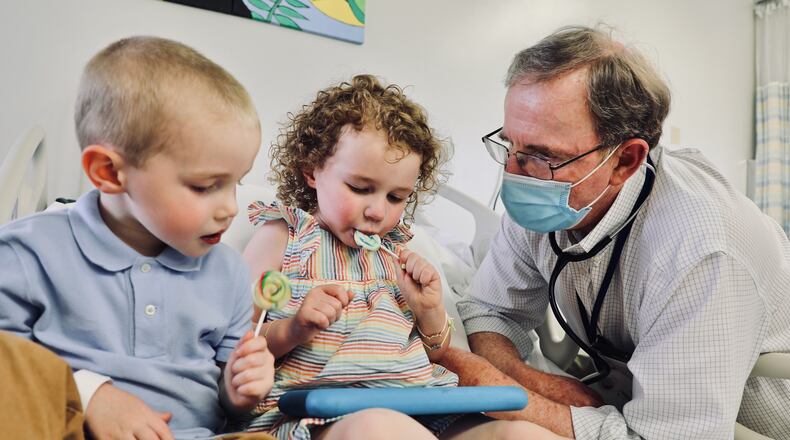Dr. Robert W. Frenck Jr., professor of pediatrics at Cincinnati Children’s Hospital Medical Center who is a researcher in the clinical trials, thinks the vaccine will be available in April or May, once they have more data.
He said children under age 5 are given a three microgram dose, which is a tenth of the dose given to those older than 12. When Pfizer compared the immune response from the two smaller doses to what they saw in larger doses, they found it was lower. So they decided to test giving a third dose, and the data on that won’t be available until April.
“There were no safety issues,” Frenck said.
The FDA originally hoped to speed up approval of the vaccine amid concerns that the Omicron surge was hitting kids harder than previous variants. In Ohio, 21,971 COVID cases in children under age 5 were reported in January, about 4.3% of total cases. This is considerably higher than at any other point in the pandemic.
Dayton Children’s is seeing a decline in COVID-19 patients after hitting an all-time high in mid-January. Last week the hospital admitted 27 new children with COVID, 15 of whom were too young for the vaccine. Three patients were in the pediatric intensive care unit. The hospital reports 88% of those hospitalized were unvaccinated, including those who were ineligible.
Dr. Michael Klatte, chief of infectious disease at Dayton Children’s, commends Pfizer and the FDA for waiting until they had all the data. He said that shows they are being cautious, following the science and not rushing the process.
“All of us pediatricians would like nothing more than to have a vaccine to prevent this infection in children of all ages, but we’re not going to sacrifice what needs to be done,” he said.
During the most recent surge, Dayton Children’s saw an increase in young children getting sick and having complications from COVID, Klatte said. He is hopeful the vaccine will help protect those children and their families.
But he fears that when the vaccine is released in the spring — when numbers are expected to be lower — it will undermine the sense of urgency people need to have to get their kids vaccinated.
“When something is endemic, it’s still there,” he said “Your children are still at risk of developing this infection and the complications that come with it.”
He lamented that coronavirus vaccine rates among older children lags adults. In Ohio, less than a quarter of children ages 5 to 11 have gotten the shot, compared to 65% of the total eligible population.
“I can’t stress enough that whenever you have a child eligible for a vaccine-preventable disease like COVID, you need to have your children get it,” he said.
Shandrial Sander-Allen, owner of Small World Early Childhood Development Center on Liscum Drive in Dayton, said a “substantial amount” of the kids they care for got sick during the Omicron surge.
“We discovered that in the beginning (of the pandemic), it seemed it was more the adults who were getting it,” she said. “It’s totally different now with Omicron. It seems like more of the children are getting it than adults.”
The center had to shut down for a week in January because so many kids and teachers were sick. In January 2021, one of her employees died from COVID.
Sander-Allen said she hopes the vaccine for the littlest kids is available soon — and that parents get their kids vaccinated.
“For one, it gives the teachers an added sense of protection,” she said. “With the majority of teachers being vaccinated, their concern now is the children.”
The Associated Press contributed to this report.


